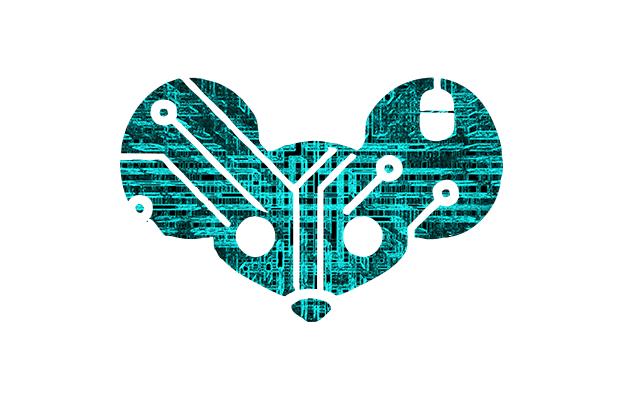

The steam survey doesn’t count individual games; the Steam client itself collects and sends the data after prompting the user for permission. So all the matters is the OS visible to the Steam Client.


The steam survey doesn’t count individual games; the Steam client itself collects and sends the data after prompting the user for permission. So all the matters is the OS visible to the Steam Client.


Have you tried connecting both via display port or both via HDMI?
Not that that should matter normally, but good starting point in trying to get around what may be a bug?
Edit: just remembered I’ve been having intermitten problems with my 2nd display since last nvidia driver if I have my vr head set plugged in to the 3rd port (even off). When i unplugged it and restarted I got my desktop loading as normal.
Atomic systems or rpm-ostree is an interesting concept and may well be the future of distributing linux, but it has a lot of compromises. It may not be the first place to start when leaving windows.
The problem is all the apps and things you may wish to do with your OS. Flatpak is the preferred method of installing apps as it doesn’t interfere with the OS, but that is a compromise that means more overhead for running apps including memory and disk space, and less integration with the host OS than traditional apps.
You can overlay native apps but the more you overlay onto the immutable os, the more complex upgrading gets and the risks of breaking stuff.
I’m not sure I would be starting with an immutable OS when switching away from windows. While it has a lot of theoretical benefits, its a work in progress and with significant compromises at the moment. Your VPN may just be the first of many programmes you find you need to overlay.
I personally would look at a more traditional install, get it working how you like and if you find Linux works as a permanent home then think about how you might recreate that with an immutable OS base. If your needs a re very simple then maybe it’ll be easy, but if you’re using lots of software and tools (particularly if its not available Flatpak) or custom OS config you may find atomic desktops are not yet quite ready for you.
It could be frustrating and off putting if you try linux immutable, find loads of problems and attribute that to linux when its actually the immutable OS that’s the cause.


This is great, Locomotion was a good game in its own right. Hopefully this will be an opportunity to change and fix the game a little going forward - its a game that never quite reached its full potential although already a good game.
Thanks for sharing! I’m going to download it and try it with my gog version. Its 80% off now on fog now BTW.


I disagree - Outlook is a walled garden of closed standards, and it makes users vulnerable to the whims of Microsoft or dependent entirely on their office ecosystem.
The recent outlook hack with senior accounts hacked and only being informed by Microsoft of the hack 1 year later is a good example.
Outlook is superficially good but essentially big businesses and organisations are locked in to a proprietary system for email and calendars and entirely reliant on Microsoft to keep their data secure.
I’m actually surprised Antitrust laws aren’t used to break up the Office 365 monopoly. Only the teams integration is being challenged but the tight integration between Outlook, Office and OneDrive is monopolistic. Other services could integrate in the same way if Microsoft was forced to open up its APIs, which would be good for competition and customers.
At the moment you pretty much have to go all in with Office or forgo major integration benefits if you want to use different cloud or mail services. Why do you need 1 single provider for office software, mail and cloud storage?


Well they said themselves why there is not a focus on desktop apps: web apps work well. I use proton calendar for my personal calendar. For work I use outlook. For both I access via phone apps or web browser on my desktop.
The big problem with calendar desktop apps is not the apps, it’s how they sync and share. You have either ICS or caldav.
The biggest problem is Microsoft Office. It partially supports ICS and is a nightmare to work with Exchange calendars. Most Microsoft clients (84% apparently) are hosted in Microsoft cloud services, and Microsoft is removing EWS support in 2026 (which Thunderbird is working to support). Microsoft’s own Graph api for cloud access is limited preventing some basic desktop features.
So existing calendar software is fine if you use good services that support standards. Its bad if you’re locked into the proprietary Microsoft ecosystem. Mac calendar tools will hit the same problems in 2026 when EWS support is dropped.
There is basically no incentive to work on these tools with Exchange because its a deliberately walled garden. But Thunderbird and other desktop calendar apps are decent, they just don’t support Outlook/Exchange.
Its on businesses to challenge why Microsoft keeps their data walled within a proprietary system. Security may be an argument but that’s a little flimsy when you see how very senior outlook accounts have been accessed by hackers and Microsoft has been keeping it quiet. Theyve only started contacting people now to tell them their emails maybhave been accessed after a major hack last year. And were talking CEO level account access.


And there is the problem laid bare - there are too many people associated with the campaign who have a vested interest in it continuing, and are unable or unwilling to step back and listen.
Its been blindingly obvious for the last 18 months that Biden is a very bad choice for the democratic nomination. But the entire discourse has been dominated by an attitude that if you don’t support biden, you’re basically support trump.
It is the Biden supporters who are going to hand the presidency on a silver platter to Trump.
They need to step back and look at the bigger picture. This is not just some Republican talking point to reflexively ignore and fight against. Biden IS too old, and he DOES come across as confused. And he is making trump look better by comparison - he is lowering the bar of expectation and scrutiny of trump because the focus is on Bidens age and mental capacity.
The democrats have to ditch biden right now and begin the urgebt search for a better, younger candidate to unite behind. Its already very late in the day but every day they continue with Biden is another wasted.


In this situation I’d save a copy of the sheet to my phone in a standard format and use a non google app. The file itself can be backed up to on line storage and remain accessible from multiple devices but you remove it from googles walled garden.
On android if you want open source then Collabra is a full office suite based on LibreOffice. Alternatively LibreOffice Viewer is the official libre app - ok for viewing files but with an experimental mode for editing (not really ready for editing yet).
WPS Office is a free office suite with add or paid version which has a good reputation.
Microsoft Office is also an option.
If you want to stay with google sheets and just view the file offline then try saving a copy to your phone in a different format and view that with the Google spreadsheet app (if it can still do that). But I’d take the pop up as a sign that its time to move on from googles shitty products.


Oxford University is older than calculus.


That is then not a technology ready for mass use. That would be McDonalds paying IBM to let it beta test (or alpha test it seems) its software for them.
And the only way to check the order would be to listen to each order and confirm the order is correct - so totally duplicating the AI’s job. It then becomes “what’s the point” for McDonalds?
AI tools at present are broken and not fit for purpose.


AI is and always has been a bullshit technology. Its no where near as capable as its proponents in tech industry have been claiming. Its all driven by greed to feed into a stock price frenzy but its the emperor’s new clothes. In the future it may be something useful but at present even the tools that exist are unreliable and broken.
Self Drive Cars is different, very much a Tesla issue rather than generalised. Tesla has a first move advantage but then Elon Musk blew it by forcing his engineers to cut back on sensors and tech to save money because he knows best. Other self drive manufacturers are doing well and even have licenses to test their fully featured systems in multiple locations.
AI is a generally crap technology (maybe in the future it will be something useful). Self Drive is a generally myself up technology, except at Tesla where they went for the crap unworkable version.


Regardless of the supposed motivations, this is mass surveillance on a scale never seen before. The EU wants to become China 2.0.


Non profit doesn’t mean free. A non profit costs money to run. In this case I guess arguably selling textbooks and material is how the money to preserve the language comes in. The only alternativesnwould presumably be charitable donations.
Money that comes in to a non profit is not used for profit or shares but reinvested in the non profit to further its goal such as preserving a dying language.


Unless you’re specifically wanting to play with a different OS then Debian again. Makes much more sense to be using the same version of Linux and all the software ypu use rather than potentially different versions.
Also it will be simpler to maintain as everything is the same.
If you do want to play / test another distro then Mint has a low learning curve. FreeBSD is more different but you could easily try it and switch to something else if you don’t like it. Its different but not so much that linux users would feel totally lost.
Probably the most confusing thing for linux user trying FreeBSD is that Bash is not installed, and BSD uses sh instead by default. Bash can be easily installed and set as the default shell which will give a lot more familiarity. But otherwise it’ll feel like a familiar modern complete system, and you can use the same desktop environments you’re familiar with already in linux.
EDIT: You did say “backup” in your title. If that’s the main use case then definitely Debian again. If your laptop breaks or is stolen it makes sense to have a familiar system to pick up. Also important to sync and backup your data so it can be picked up on the other laptop. If backup machine is your focus then I’d say same OS and look more into data retention and retrieval between the two laptops, and ensure your important data is continuously backed up.


Well all we have in the article are claims from the perpetrators family and vague innuendo about what was on the victims phone.
The only facts outlined in the article were that the victim was shot 7 times in his own home, and managed to call from help from the street before dying. The purpetrator was on the run for 2 weeks, and allegedly on drugs during that time.
Its trash journalism and a shit article. The allegations may be substantiated or they may not, but at the moment the story as written is the family’s opinion spliced into a few details about the crime.


Yeah its just not a good show.
I just watched a scene where Michael and Mol were working together, then suddenly Michael decides to attack Mol, then they have a kung fu fight and finally Michael asks Mol stop and says she needs to trust her, as if Michael hadn’t just violently assaulted her. The writing is nonsensical.
Unfortunately that is symptomatic of the show as a whole and just one of many problems.
Also the constant deus ex machina, with the characters having a conversations where everyone finishes each others sentences. Its tiresome to watch. I really wanted to like the show but never could.


As a kid Amiga Workbench was my first desktop environment, and then later Win 3.11 in MS DOS.
I remember my dad toying with Linux but can’t remember which one (he did settle on SuSE though I recall). My first linux distros was Ubuntu.


York - I’m in Manchester and it’s really not far away (about 1hr 40) but I’ve never really thought to make the trip. I think I will now!


English Heritage was set up by the government to protect historic sites, and then spun out as an independent charity to continue that role.
Protecting sites includes limiting the numbers who can visit, hence enclosing them. That allows visitor numbers to be capped and managed (which reduces damage from over tourism) and also prevents illicit access and vandalisn.
In the case of seahenge it was literally rotting away - the decision was made to excavate and preserve what was left. That was in response to press campaigns to do something to save seahenge; it was a controversial at the time and remains so now. They did this while still part of the UK government in 1999.
Stonehenge was gifted to the nation in 1915 and had been on private land up to that ppint. A lot of expensive work has been done to preserve the site including demolishing other structures to preserve the skyline, and even recently burying a section of road.
Visitor charges and subscriptions pay for English Heritage to continue their work and preserve our history. They’re not “robbing bastards”, they’re a non profit with an expensive role.
Most as in SteamOS + Arch = 49.25%.
It’s interesting how fragmented the Linux user base is in the survey. Excluding steam deck from the equation, the visible versions of Ubuntu are getting roughly 18.6%, Arch is getting like 14% of the desktop and Mint 21.3 getting 8.5%. The Flatpak version does put confusion into the data (hiding 11% of desktop versions) and the missing “other” 22.94% group accounts for 39% of the desktops so there may be lots of other version fragments hidden away, but regardless no single distro version seem to dominate.
It’d be nice to see the whole list.